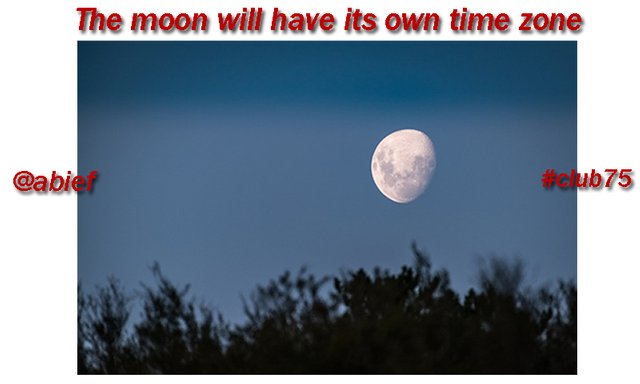Hello Friends,

If at any time you have wondered what time it is on the Moon, it is most likely that the answer you got was ambiguous or totally null because, this beautiful satellite is not governed by its own schedule and when the astronauts stepped on lunar soil, the reference they had was the time scales of each phase during the mission.
In view of the above, for a long time scientists from the European Space Agency (ESA) and NASA have been doing research to solve this problem since, for the missions that will be carried out in the next decade, it is essential that the Moon has its time zone.

According to the statements of Pietro Giordano, Director General of ESA, during the next decade, 50 missions will operate around the Moon of which, 2 will be on it and to ensure that communication between the spacecraft, astronauts and the control tower is independent, it is necessary to establish a schedule for this satellite. Now, to achieve this project, both ESA and NASA began testing this study in November last year highlighting that this time zone will not only be recognized by them, we will also see it in analog clocks of our daily life and lunar systems.
It should be noted that, NASA and ESA have also been in contact for the development of this time zone with LunaNet and the intention of this is to establish protocols, standards and requirements that determine the interface of this schedule since, in Giordano's opinion, if the system has very well defined parameters, at the time of undertaking a lunar mission with or without a crew, the International Space Agency is going to know if they are doing it at the right time.

In addition to the above, the lunar missions that are governed by the lunar time zone, will also have a GPS that will be monitoring the weather of the Moon and our planet Earth since, although the satellite has its own time, the missions can not be isolated from the time of the earth and based on this, Jorg Hahn, one of the engineers who has been working on the development of this project said that the biggest challenge they have is to systematize a schedule that will be light years away with, the time of the earth because, if there is any margin of error in the calculation of the schedule, it can cause a problem in the mission which, It would be catastrophic.
Among the advances provided by ESA on this issue highlights that, the lunar time will advance 56 millionths of seconds per day and thanks to this it was discovered that, a day on the Moon, is equivalent to 29 days spent on Earth therefore, a lunar mission can take 15 days of lunar nights being this the determination of the most accurate time they have specified because, In previous missions, only estimates were known.

Finally, although this development is already in the testing phase, the ESA explained that it is still a topic of discussion for the agency how the UTC reference will be that will determine the lunar time since, the international offices of France and Pesas consider that the synchronization of time should be with the selenocentric framework and not our planet because, when studying the time of a context that does not have gravity, the accuracy with a system that does have it is very varied for that reason, it is not so feasible to say so firmly that it is possible to establish a lunar schedule anchored to the Earth.
Thanks For Reading
Downvoting a post can decrease pending rewards and make it less visible. Common reasons:
Submit
Thanks For Review
Downvoting a post can decrease pending rewards and make it less visible. Common reasons:
Submit
TEAM 5 CURATORS
This post has been upvoted through steemcurator08. We support quality posts anywhere and with any tags. Curated by: @m-fdo
Downvoting a post can decrease pending rewards and make it less visible. Common reasons:
Submit
Thanks @m-fdo
Downvoting a post can decrease pending rewards and make it less visible. Common reasons:
Submit